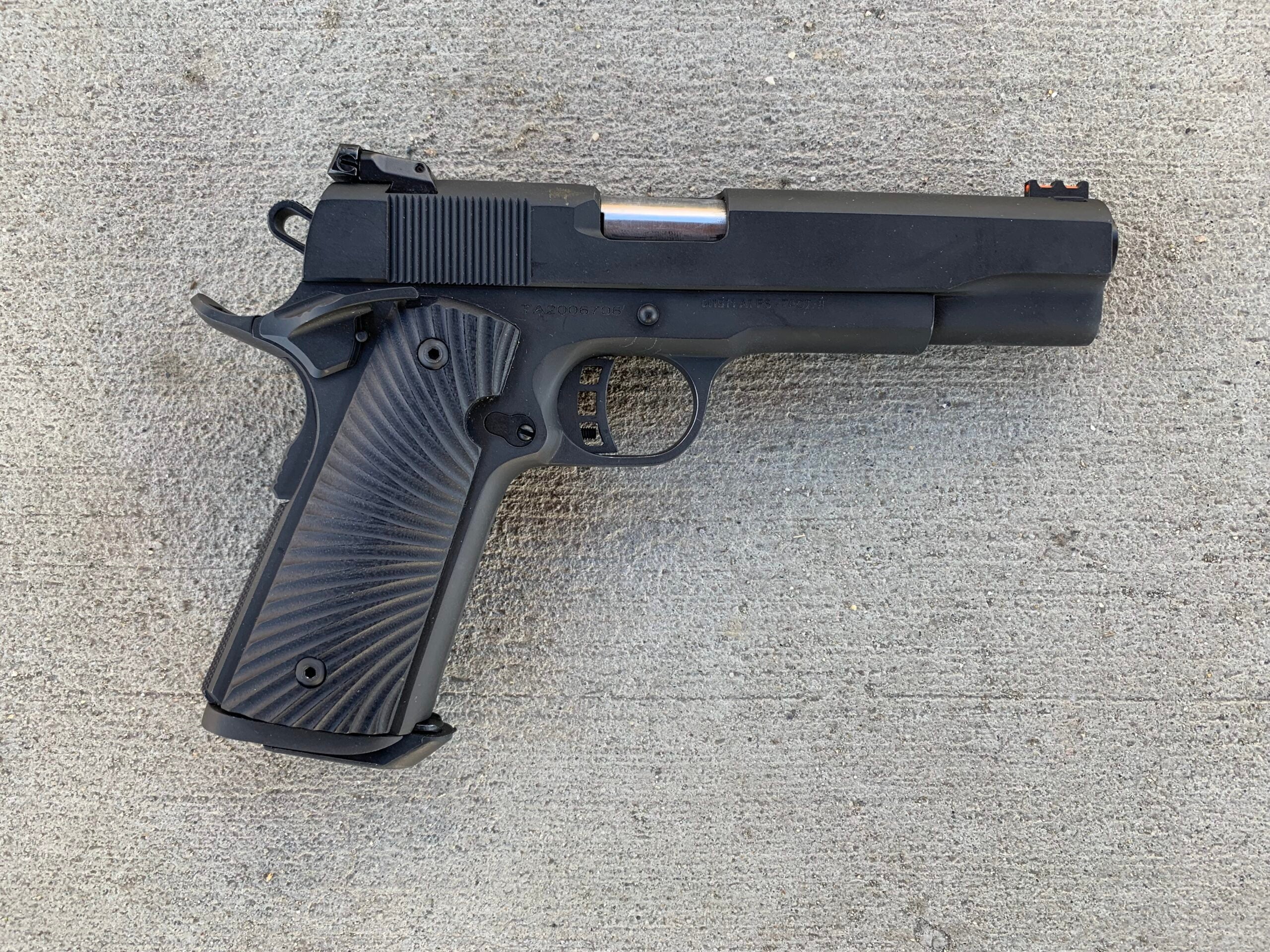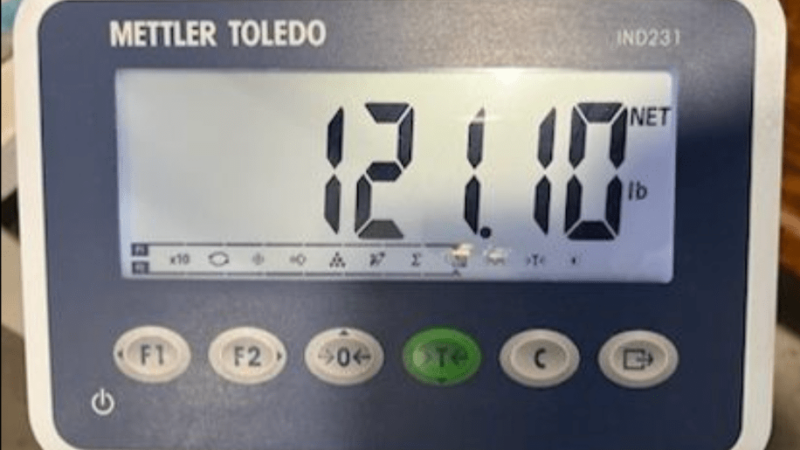Taylor’s & Company 1911 Tactical 10mm: Tested and Reviewed
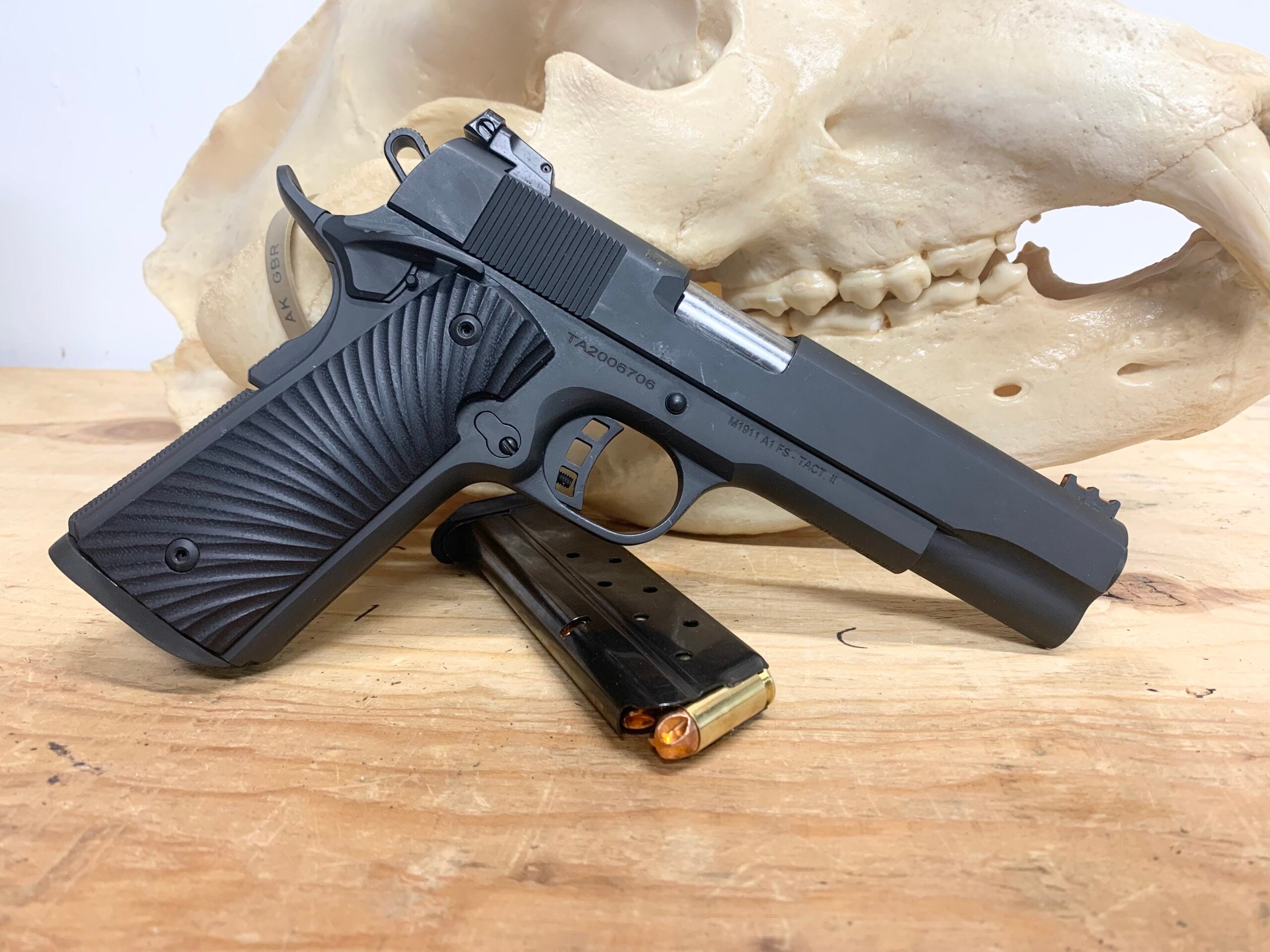
We may earn revenue from the products available on this page and participate in affiliate programs. Learn More ›
Fans of 10mm pistols have nothing if not choices in today’s market, and manufacturers have introduced many new models over the past few years. Though many of these are high-capacity polymer pistols, the field of 10mm 1911’s is growing too. Well-known pistols like the Colt Delta Elite are the bedrock of this category, but the rise in popularity has also summoned a crop of budget-priced 1911’s to take up the slack. No 1911 pistol in 10mm is cheap, and the good ones typically cost more than a thousand bucks. Taylor’s & Company impressed us in our 2023 1911 test with their basic GI model in .45 ACP, and I was eager to see how their conservatively priced, full-size 1911 Tactical 10mm would perform. It’s a pistol that includes some of the upgrades typically found on high-end pistols, but would those contribute in a meaningful way?
Tyler Freel
Specs
- Caliber: 10mm Auto
- Magazine Capacity: 8+1
- Magazine Material: Blued steel
- Dimensions: 5.6 inches (H) x 8.75 inches (L) x 1.43 inches (W)
- Weight: 44 ounces (measured with empty magazine)
- Frame: Parkerized steel
- Slide: Parkerized steel
- Barrel: 5-inch, 6-groove, bull profile
- Sights: Novak-style, adjustable rear two-dot, orange fiber-optic front
- Optic ready: No
- Trigger: Single-action, 6 pounds 5 ounces (measured)
- Safety: Grip safety, ambidextrous thumb safety
- Price: $690
Price Calibration: How Much Does a Budget 1911 10mm Cost?
Price is one of the first factors that any scrupulous customer looks at when considering a new pistol. When sorting through various styles of pistols, there is an obvious price gap between flagship polymer pistols and 1911s. Well-renowned 1911 models from makers such as Kimber, Ruger, and even newcomers such as Savage typically sell for $1,000 to $1,600. Premium 1911 pistols can fetch from $2,000 to $7,000. Because of this, a “budget” 1911 will usually be somewhere in the $600 to $800 range—and they’re almost exclusively imported.
There’s nothing wrong with preferring the 1911 platform for a 10mm, but plan on shelling out as much or more than you’ll spend for a pistol like the Glock G20.
A Thorough Look At the Taylor’s & Company 1911 Tactical 10mm
Taylor’s & Company 1911 pistols are imported from the Philippines, and the first one we got to try was in our 1911 test at Gunsite Academy back in April. It was a basic A1 GI model in .45 ACP, but it impressed our test team with its reliability and price. When I saw their 1911 A1 Tactical model in 10mm auto, I knew I needed to get my hands on it. Priced at $690, it’s one of the most affordable 1911 10mm pistols I’ve seen. With bargain 1911s, a meager price can mean either a great value, or a colossal headache—either way, I aimed to sort it out.

Fit, Finish, and Feature Set
One thing that gave me a good initial impression of the Taylor’s & Company 1911 Tactical 10mm is its simple-but-smart feature set. Too many budget pistols make the mistake of trying to be something they’re not. They are packed with add-ons and parts usually seen on high-end pistols, but these budget-priced imposters often end up being poorly executed. The Taylor’s & Company pistol has a simple look, with some performance-enhancing features like a magwell, skeletonized hammer, heavy-duty guide rod, good sights, and beavertail grip safety. Rather than a fancy coating, the frame, slide, and barrel are given a Parkerized finish, which is affordable, durable, and quintessentially 1911.
Parkerizing is a decades-old finishing process that gives the parts a durable iron-phosphate coating. On this 1911 Tactical 10mm, it’s an even matte finish that fits the price range of the pistol. It’s more appealing than some of the cheap powder coatings you’ll see on other budget-priced 1911 pistols. The fit between slide and frame is excellent, with almost no slop. After testing, the Parkerization shows only slight, use-appropriate wear.
I’d like to see some basic front cocking serrations, but as-is, the slide is smooth to operate, with very little slop. Magazines are easy to load and it’s not hard to seat fully-loaded magazines under a closed slide. The pistol’s extractor shows solid purchase on case rims and cartridges eject robustly when the action is hand-cycled.
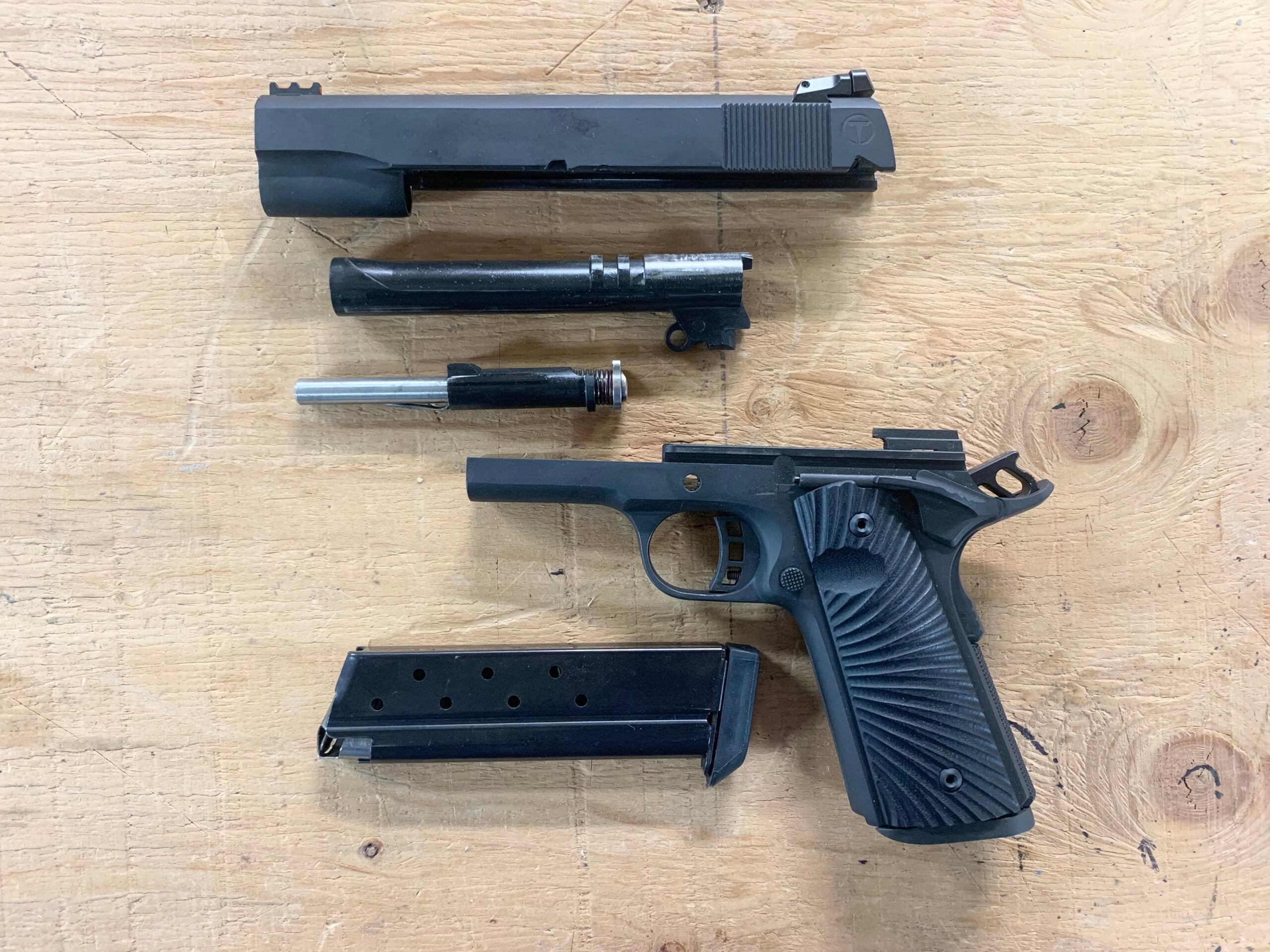
Slide and Barrel Assembly
Externally, the slide of the 1911 Tactical 10mm is simple. It’s got basic GI rear cocking serrations and nothing up front. The pistol has a Novak-style white-dot rear sight that’s fixed into a dovetail in the slide via two set screws. It’s adjustable for windage and elevation, and is a low-profile, seemingly durable design. The front sight contains an orange fiber optic.
The full-length slide houses the 5-inch bull-profile barrel. There’s no traditional barrel bushing, rather a full-length, heavy-duty guide rod that appears to be stainless steel. The guide rod assembly features a Parkerized spring plug that retains the round-coil recoil spring. The assembly field strips like some of the older Staccato and STI pistols. The shooter can use a bent paper clip or small Allen wrench to keep the spring compressed by the spring plug, holding the recoil assembly together. The barrel can be removed out the front of the slide.
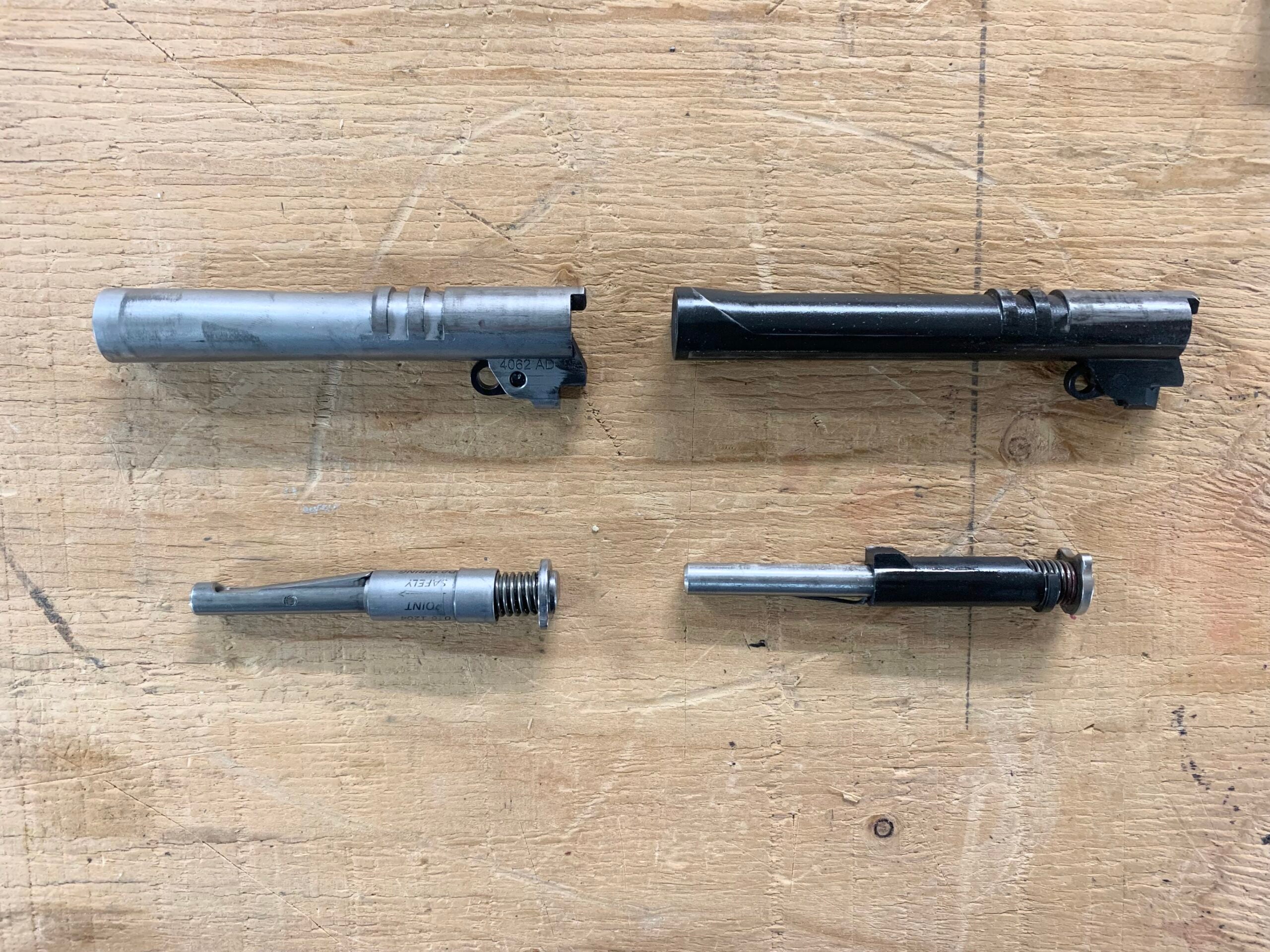
Frame and Grip
Keeping with its modest price, the Taylor’s & Company 1911 Tactical 10mm has a simple full-size 1911 frame that does not include an accessory rail. It’s got a non-adjustable trigger with a curved shoe that breaks at 6 pounds, 5 ounces on my Lyman trigger pull gauge. The trigger is crisp, but by no means exceptional.
It’s got a nicely-ribbed front strap, checkered backstrap, and a well-fit beavertail grip safety. The simple steel magwell aids with speedy reloading, but requires magazines with extended baseplates. It will work with normal Kimber 10mm 1911 magazines, but they’re trickier to seat into the magwell. The pistol comes with two 8-round magazines that have an extended rubber base pad. The magazine catch button is oriented for right-handed shooters, but the gun has ambidextrous thumb safety levers. Even after testing, the thumb safety levers aren’t showing any signs of wiggling loose or poor fit. They operate smoothly and there’s no slop when they are disengaged and pressure is applied with a secure grip.
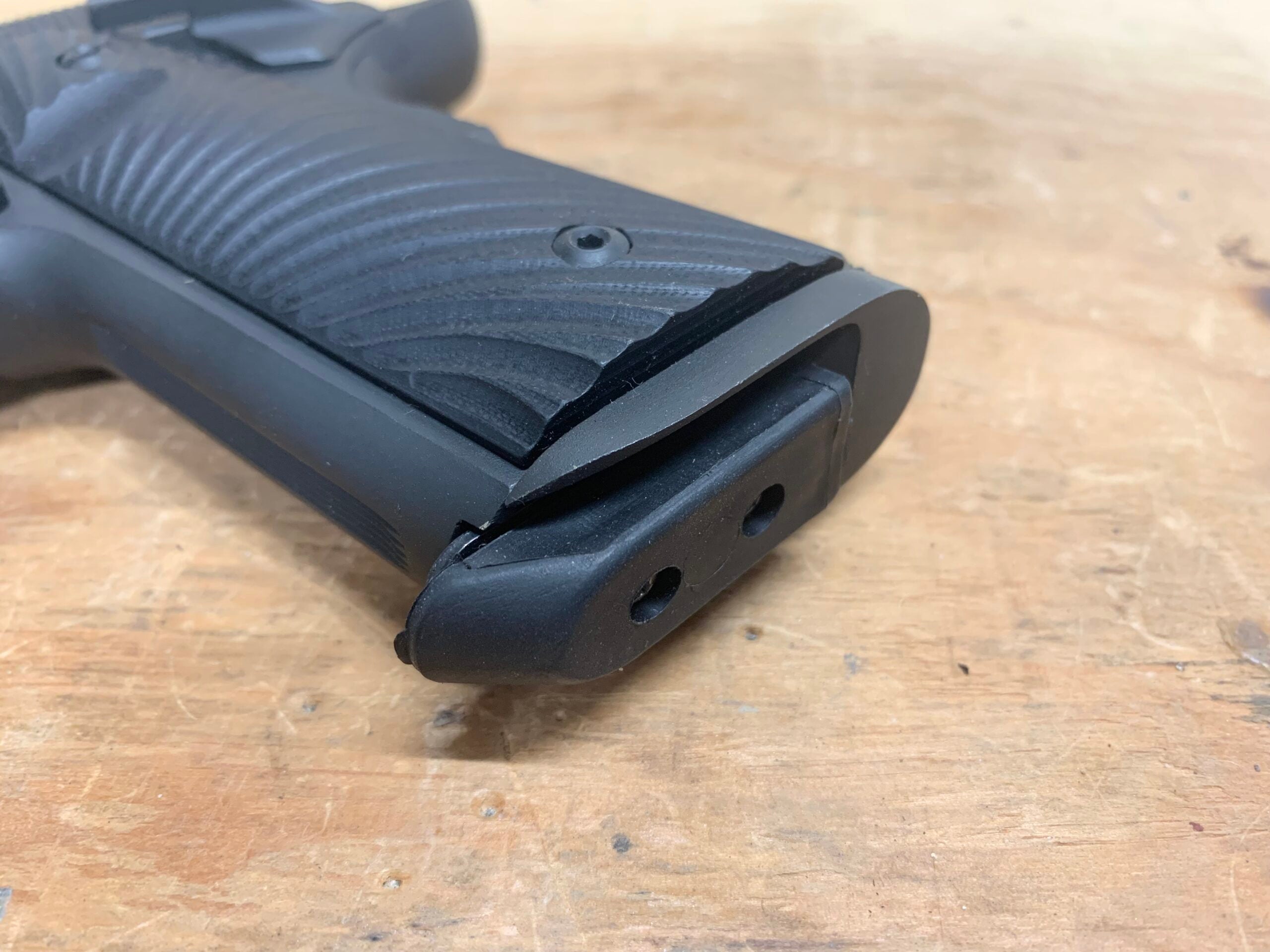
The frame is scaled on either side with imitation Wilson Combat Starburst-pattern grips. The pattern is basically reversed, but it does provide excellent traction and the grip scales look good on this pistol. After lots of shooting, the grips loosened a bit, and I had a hell of a time finding an Allen key, standard or metric, that would fit the screws—I couldn’t find one that fit properly. Common screw heads would be helpful in this case.
Shooting the Taylor’s & Company 1911 Tactical 10mm
The brass tacks of any pistol, especially a budget pistol, is the question of its practical performance. Does the damn thing work, or doesn’t it? Spoiler alert: not all do. To test this 1911 Tactical 10mm, I fired a total of 500 rounds through it. I used a variety of bullet styles and power levels, including FBI Lite and full-power 180-grain FMJ factory, 180-grain FMJ handloads, 180- and 200-grain defensive hollow points, as well as 115-, 140-, 180-, 200-, and 220-grain bear defense loads.
I fired one- and two-handed, strong hand and weak hand, at a variety of distances and paces. I fired five-shot groups for accuracy at 15 yards from a supported position, shot at rotating targets for time, and even ran some Bill drills. I kept the barrel, slide rails, and disconnector lubricated, but I didn’t clean it during those 500 rounds. I never experienced a single malfunction with this pistol, which surprised me—especially considering how finicky some 1911s can be. I once had a Kimber Camp Guard 10 that was a great pistol, but would regularly give me feed ramp stoppages when it got dirty. Color me impressed.
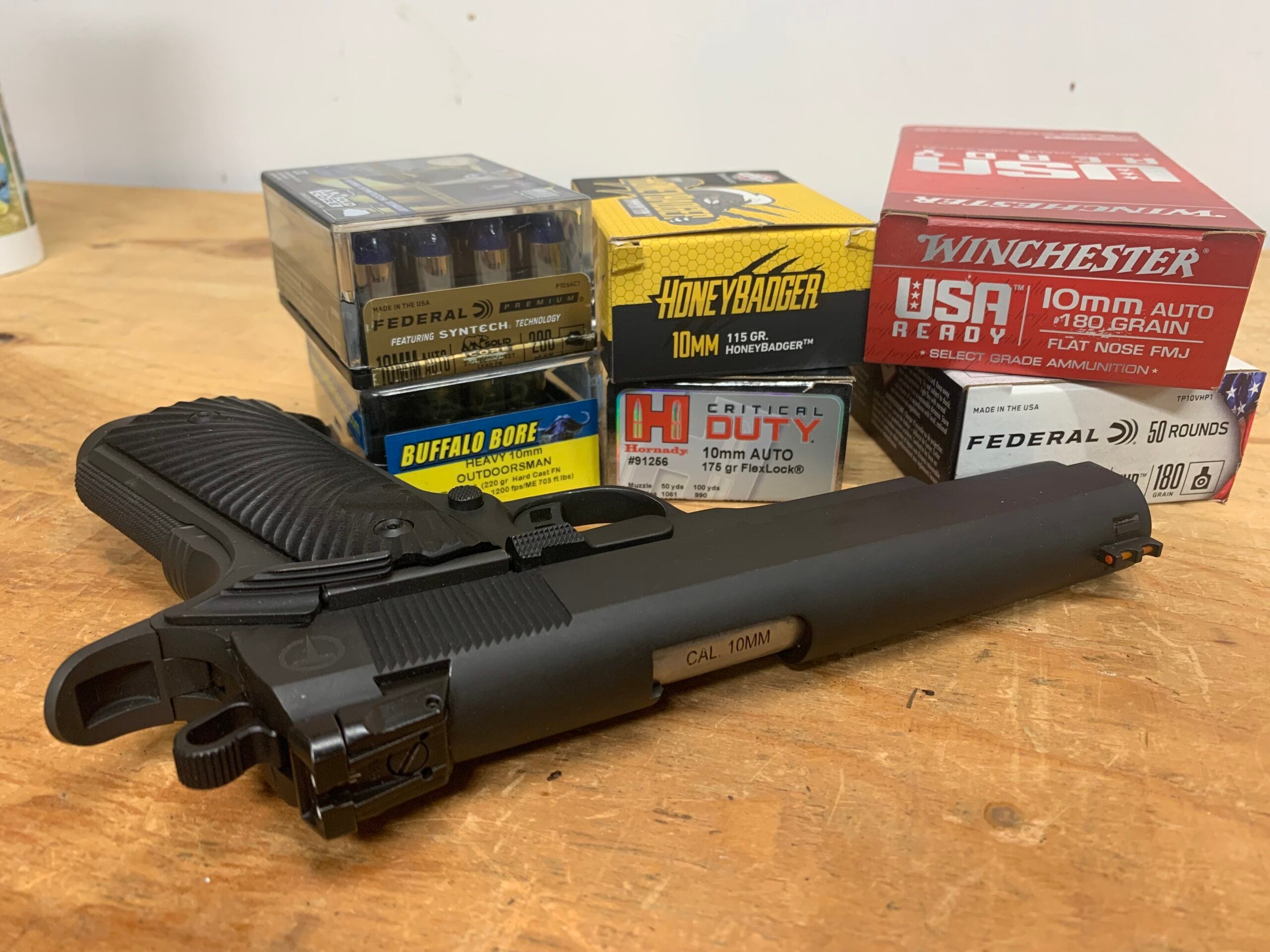
The Taylor’s & Company 1911 Tactical 10mm showed good accuracy, averaging 1.9-inch 5-shot groups from 9 groups with 3 different types of ammo. In our 2023 Gun test, the Ruger SR 1911 10mm averaged 3.3-inch groups, and the Gen 5 G20 averaged 2.6 inches. The most accurate ammo I tested was Black Hills 115-grain Honey Badger, which fires a monolithic copper bullet at nearly 1,600 feet per second and averaged 1.4-inch groups.
Overall, this is a relatively pleasant 10mm pistol to shoot. At 44 ounces, it’s 50 percent heavier than a Glock G20 when empty, and that mass helps tame the recoil. With a firm grip, the gun feels snappier than a 1911 in .45 ACP, but falls right back on target. Like other 1911 pistols, it just feels good to shoot.
What the Taylor’s & Company 1911 Tactical 10mm Does Well
The 1911 Tactical 10mm is a good value and a genuinely good pistol. It incorporates some well-executed upgrades without breaking the bank and cycled every type of ammo I could throw at it.
Where the Taylor’s & company 1911 Tactical 10mm Could Be Better
For a modern 1911 and a potential self-defense or bear-defense pistol, it would be nice to include an accessory rail on the frame and some front cocking serrations.
Final Thoughts on the Taylor’s & Company 1911 Tactical 10mm
I think that the Taylor’s & Company 1911 Tactical is one of the most well-executed budget-priced 1911 10mm pistols I’ve seen. It’s simple, but effective, has a modest-but-durable finish, and incorporates smart features to aid performance without gaudy attempts to be something it’s not. It’s not even dressed with excessive logos or nomenclature. It’s a simple, affordable, and—so far—utterly reliable 1911.
The post Taylor’s & Company 1911 Tactical 10mm: Tested and Reviewed appeared first on Outdoor Life.
Articles may contain affiliate links which enable us to share in the revenue of any purchases made.
Source: https://www.outdoorlife.com/guns/taylors-1911-tactical-10mm-review/

